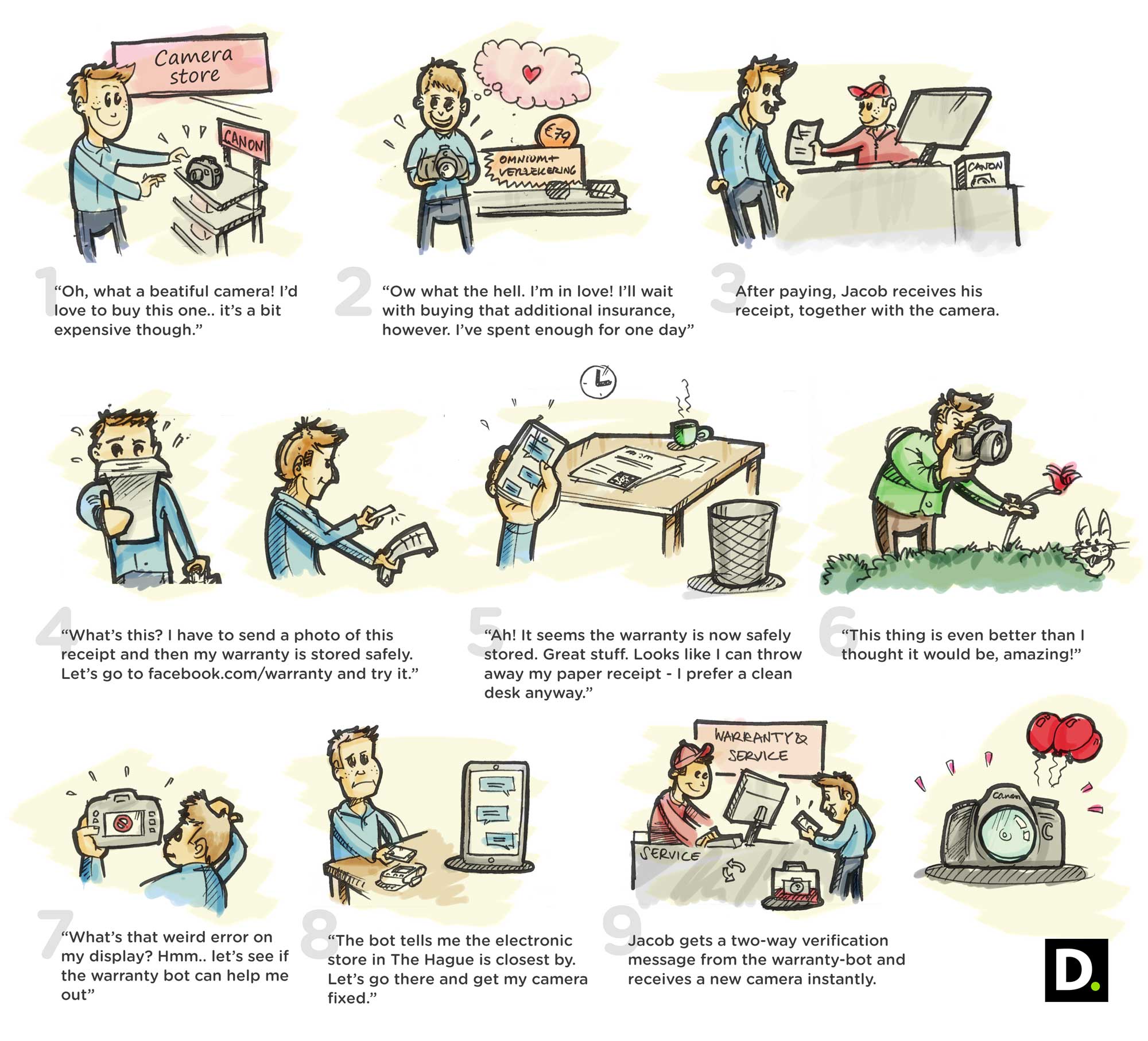Deloitte Uses Facebook, Bitcoin Blockchain to Improve Warranties

Deloitte found a way to use blockchain technology to improve product warranties at its recent three-day hackathon. The innovative product warranty demonstrates how blockchain can improve a regular task such as managing a product warranty. A summary of the application has been posted on the Deloitte website.
Consumers have long found product warranties problematic since warranties are easily lost. Being recorded on paper, warranties can also become unreadable over time.
Hackathon Addresses Design
One of the design problems addressed at the hackathon was to provide a service that makes activating, using and changing a product warranty easier, as well as tamper proof and secure.
Deloitte established three design principles in creating a minimal viable product (MVP).
1) On-boarding a user should be easy. Product warranties are necessities that only become important when they are needed. Hence, they tend to be boring. Deloitte wanted the design to be easy to on-board in one step.
2) It should be feasible and ready to implement immediately. To show blockchain’s potential, the design has to solve an immediate problem.
3) Integrating the service at retail should not require changing the existing sales process. There should be no additional infrastructure needed.
The Deloitte MVP enables users to add information about their purchase and the warranty information on the blockchain using a Facebook messenger bot.
Facebook Messenger Used
The Facebook Messenger Chatbot that launched on April 12 allows companies to program an “automated service robot” that can help customers without the need for human intervention. This allows customers to receive service immediately.
Deloitte used the Facebook Messenger on account of the fact that consumers are becoming “app tired.” Out of the 60-plus apps people install, they only select five on average. By providing the service through an existing channel, Deloitte removes a big hurdle in engaging new users. By designing the service from existing channels, it does not require people to go out of their way to get it.
The image bellow illustrates the components of the process.
The next illustration demonstrates how the warranty service works.
1) The user receives a receipt.
2) The receipt includes a QR code that contains the information of the product, including serial number, date and time stamp.
3) The customer gets instructions to find the warranty bot on Facebook Messenger.
4) The user sends the picture of the receipt to the warranty bot via an instant message.
5) The engine unwraps the QR code and stores the product information on the blockchain.
Receipt On Blockchain
The receipt is stored safety on the blockchain ledger and cannot be tampered with minus the private key. The user can discard the paper receipt and be confident they can claim a warranty if needed.
The retailer does not have to change anything to its point of sale infrastructure besides generating a unique code following payment, which is printed on the receipt. The retailer does not have to fill out any contact information. Facebook is the unique identifier.
A customer can go to the warranty profile to view stored warranties. They can get a direct link in Facebook messenger that connects to a web-based profile after the bot confirms their first successful warranty entry.
The profile possibilities include:
• Finding the newly-added product, as well as early stored products, offering an overview of household equipment and warranty expirations.
• The user can buy insurance with one click by browsing the insurance options for the product.
• If the user decides to sell the product, the blockchain-stored warranty can transfer by linking to online marketplaces like Craigslist, eBay, etc., via an API or a plugin. This ensures safety for both buyer and seller.
• They can view the product’s history. The service shows the asset’s changes on the blockchain, providing a transparent view of prior changes made to the product like ownership changes and warranty extensions.
New Opportunities
The ability to store assets in a secure, tamper-proof way opens up a lot of opportunity for retailers, governments, financial institutions and other industries.
The hackathon demonstrated blockchain users can create an MVP that can have a big impact on an industry. Deloitte believes if it had explored a different theme in the hackathon, the impact would have been just as significant.
This particular MVP can disrupt the way consumers handle and track warranties and insurance claims, buy additional insurance for products, and sell second-hand products.
Other possibilities are:
• Buying an extended warranty after getting a notification about an expiring warranty.
• Getting a complete overview of a purchased product with a warranty. This resembles a complete household, making it easier for insurers to estimate the total value and monthly fees. It acts as a “digital vault.”
• When a user buys a new camera, the service detects the old one that is present in the list and transmits a notice to sell it online.
The insurer can offer this service in its current app as a plugin, providing all of its services in one place for the user.
Product History Recorded
The product history is essentially a record of everything that occurs to the product. It enhances the product/buyer relationship and builds transparency for retailers and suppliers.
Retailers can extend the Chatbox by creating automated services for it, such as tips, updates and new offerings, without requiring them to download a dedicated app.
The MVP is a white label solution, meaning it is not branded. The service can be offered by an insurer, bank or retail chain.
Facebook Messenger’s interface is interchangeable with any other existing channel like WhatsApp, a dedicated website, or an insurance or banking app.
Deloitte believes the combination of an instant messaging bot and the blockchain offers a safe and transparent solution that provides an easy user experience.
Featured image from Shutterstock.

